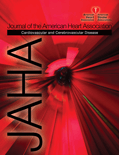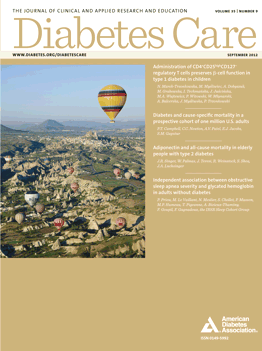SSAT:低高密度脂蛋白可能与更严重的胆道感染相关
2013-05-17 小哲 编译 医学论坛网
5月18日,在即将召开的2013美国消化疾病周上,来自美国旧金山加州大学的Lygia Stewart将发表题为《血脂和胆道感染:高密度脂蛋白水平下降引起较严重的胆道感染:一个多变量分析》的演讲。这项研究表明,血脂对于胆道感染的重要性。低密度脂蛋白(LDL)水平增加利于胆固醇(而不是胆色素)结石的形成,往往与无菌胆道相关。然而,高密度脂蛋白(HDL)水平似乎决定了胆


5月18日,在即将召开的2013美国消化疾病周上,来自美国旧金山加州大学的Lygia Stewart将发表题为《血脂和胆道感染:高密度脂蛋白水平下降引起较严重的胆道感染:一个多变量分析》的演讲。这项研究表明,血脂对于胆道感染的重要性。低密度脂蛋白(LDL)水平增加利于胆固醇(而不是胆色素)结石的形成,往往与无菌胆道相关。然而,高密度脂蛋白(HDL)水平似乎决定了胆道感染的过程;低HDL水平患者意味着更严重的胆道感染。即使在细菌胆总管结石患者之间,高HDL患者疾病轻微,而那些低HDL水平患者,常有多脏器功能失常综合征(MODS)表现。此数据表明,HDL可能可以预防胆道感染;胆道感染和低HDL水平患者可能需要更积极的临床治疗方法。这是首次有研究表明血脂水平对于胆道感染严重程度的重要性。
大家先前已经确定与胆道感染严重程度相关的因素为:胆道细菌、年龄、性别、胆总管结石、胆色素结石。最近Lygia Stewart报道了低/正常体质指数(BMI)与更严重的胆道感染相关。要理解这一点的关系,Lygia Stewart研究了血脂水平和胆道感染之间的相关性。
对475例胆结石患者进行了研究;男性410例,女性65例;平均年龄62岁(范围17岁~104岁)。培养胆结石、胆汁和血液(根据具体情况),记录结石类型。病情严重程度划分为:无(无炎症表现),全身炎性反应综合征(SIRS)(发热、白细胞增多),严重(脓肿、胆管炎、积脓症)或MODS(菌血症、低血压、器官衰竭)。使用双变量和多变量分析,研究者检测血脂水平(HDL、LDL、甘油三酯——急性疾病之前获得)与BMI、胆道细菌、菌血症、胆石类型、疾病严重程度之间的关系。在多变量分析中,研究者使用了与胆道感染的相关因素(年龄、性别、胆道细菌、胆色素结石、胆总管结石)。
结果在双变量分析中(表),BMI与HDL和甘油三酯(P<0.003)相关。LDL与胆道细菌(P=0.002)和胆色素结石(P=0.0001)呈负相关;而HDL和LDL与菌血症呈负相关(P<0.03)。HDL和LDL与感染严重程度的增加(P<0.02)和MODS临床表现(P<0.006)呈负相关。在与胆色素结石和胆道细菌因素相关的多变量分析中,LDL与胆色素结石(P=0.001)和胆道细菌(P=0.017)呈负相关。与胆道感染严重程度因素相关的多变量分析显示HDL最重要(图);只有HDL与胆道感染严重程度(P=0.007)和MODS临床表现(P=0.005)独立负相关。这些发现限于胆道细菌亚组;HDL与疾病严重程度独立负相关,甚至在细菌胆总管(CBD)结石患者之间(也是如此)。
We, and others, have previously identified factors associated with severe biliary infections: biliary bacteria, age, sex, choledocholithiasis, pigment stones. Recently we reported that a low/normal BMI was associated with more severe biliary infections. To understand this association, we studied correlations between plasma lipid levels and biliary infections. METHODS: 475 patients with gallstones were studied; 410 men, 65 women; average age 62 (range 17-104). Gallstones, bile, and blood(as applicable) were cultured, Stone type recorded. Illness severity was classified as: none (no inflammatory manifestations), SIRS (fever, leukocytosis), severe (abscess, cholangitis, empyema), or MODS (bacteremia, hypotension, organ failure). Using bivariate and multivariate analysis, we examined associations between lipid levels (HDL, LDL, Triglycerides - obtained prior to the acute illness) and: BMI, biliary bacteria, bacteremia, gallstone type, illness severity. In the multivariate analysis we used factors associated with biliary infections (age, sex, biliary bacteria, pigment stones, choledocholithiasis). RESULTS: On bivariate analysis(Table), BMI correlated with HDL and Trig (P<0.003). LDL inversely correlated with biliary bacteria (P=0.002) and pigment stones (P=0.0001); while HDL and LDL inversely correlated with bacteremia (P<0.03). HDL and LDL inversely correlated with increasing infection severity (P<0.02) and MODS manifestations (P<0.006). On Multivariate analysis of factors associated with pigment stones and biliary bacteria, LDL inversely correlated with pigment stones (P=0.001) and biliary bacteria (P=0.017). Multivariate analysis of factors associated with biliary infection severity revealed HDL as the most important lipid(Figure); only HDL inversely independently correlated with biliary infection severity(P=0.007) and MODS manifestations(P=0.005). These findings held in the subgroup with biliary bacteria; and HDL independently correlated with illness severity even among patients with bacterial-laden CBD stones. CONCLUSION: This study demonstrates the importance of plasma lipids to biliary infections. Increased LDL levels favored cholesterol (rather than pigment) gallstone formation, and were more often associated with a sterile biliary tract. HDL levels, however, seemed to dictate the course of the biliary infection; patients with low HDL levels had significantly more severe biliary infections. Even among patients with bacterial-laden CBD stones, those with high HDL levels had a mild illness, while those with low HDL levels more often had MODS manifestations. This data suggest that HDL may be protective in biliary infections; and that patients with biliary infections and low HDL levels may need a more aggressive clinical approach. This is the first study to demonstrate the importance of plasma lipid levels to the severity of biliary infections...
本网站所有内容来源注明为“梅斯医学”或“MedSci原创”的文字、图片和音视频资料,版权均属于梅斯医学所有。非经授权,任何媒体、网站或个人不得转载,授权转载时须注明来源为“梅斯医学”。其它来源的文章系转载文章,或“梅斯号”自媒体发布的文章,仅系出于传递更多信息之目的,本站仅负责审核内容合规,其内容不代表本站立场,本站不负责内容的准确性和版权。如果存在侵权、或不希望被转载的媒体或个人可与我们联系,我们将立即进行删除处理。
在此留言










#低高密度脂蛋白#
37
#脂蛋白#
52